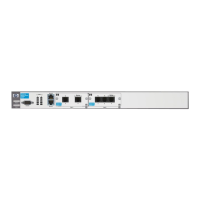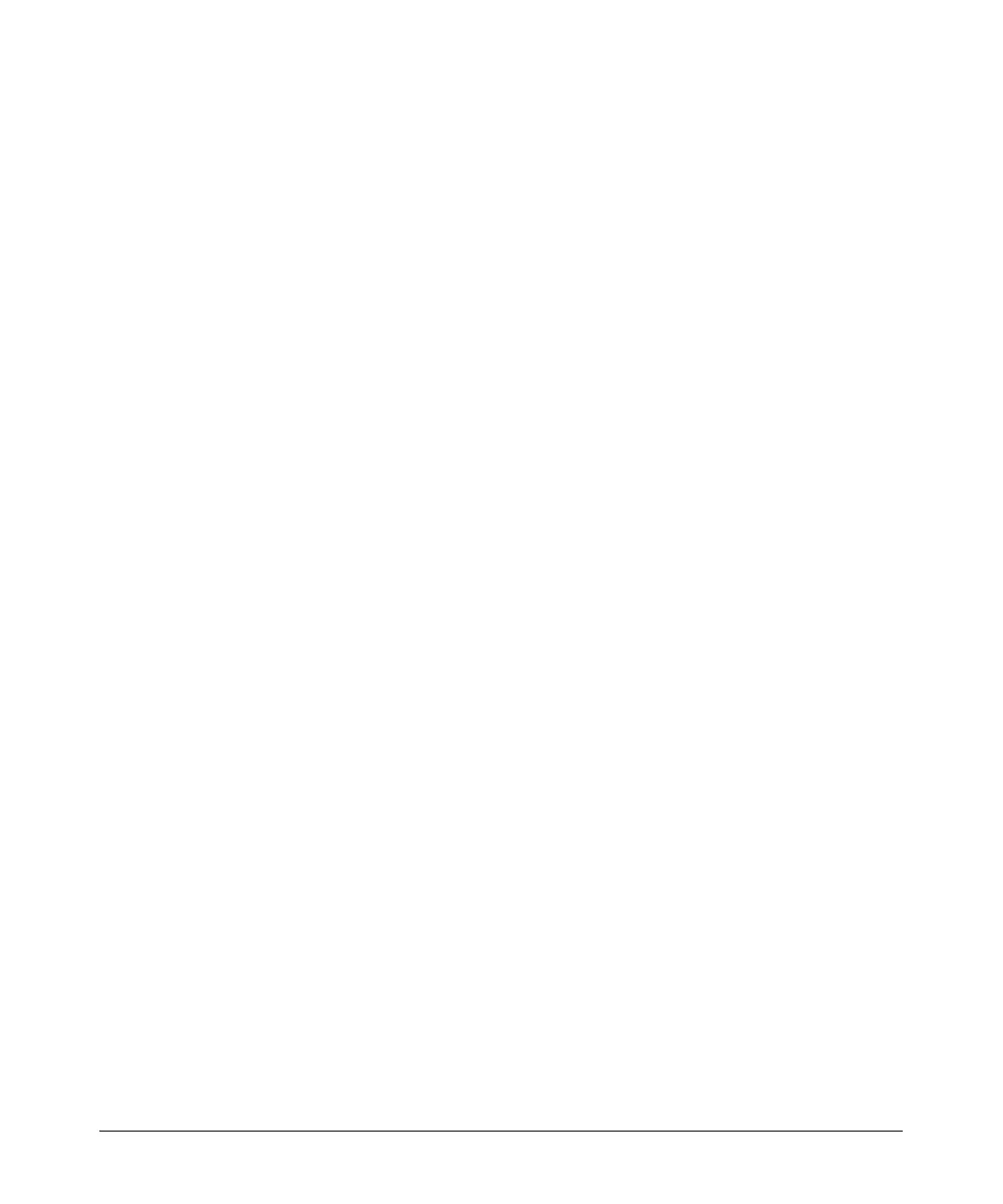9-18
Configuring the E1 + G.703 and T1 + DSX-1 Modules
Configuring the T1 + DSX-1 Module
In AMI, zero voltage represents logical zeros, and alternating positive and
negative voltage represent logical ones, thus maintaining a net zero voltage
across the line. AMI has at least one drawback: a long string of logical zeros
can result in hosts losing synchronization.
When eight or more consecutive logical zeros are received, B8ZS addresses
the synchronization problem by inserting two bipolar violations in the fourth
and seventh positions of the 8-bit string, which creates a timing mark. Because
B8ZS eliminates the synchronization problems, it has become the standard
line coding used on T1-carrier lines. Consequently, B8ZS is the default setting
on the ProCurve Secure Router, although the router supports both AMI
and B8ZS.
To configure the line coding, enter the following command from the T1
configuration mode context:
Syntax: coding [ami | b8zs]
For example, to configure the T1 interface to use AMI, enter:
ProCurve(config-t1 1/2)# coding ami
Configuring Frame Format
You must also configure the T1 interface to use the same frame format as that
used by the PBX:
■ D4
■ ESF
D4 framing combines 12 DS0 frames into a single superframe. The ESF
standard multiplexes 24 DS0 frames into an extended superframe.
The ESF format has essentially replaced the D4 framing standard because it
frees up bits that can be used to maintain the connection. Due to its popularity,
ESF is the default setting for T1 modules on the ProCurve Secure Router.
To configure the frame format, enter the following command from the T1
configuration mode context:
Syntax: framing [d4 | esf]
For example, to configure the T1 interface to use D4, enter:
ProCurve(config-t1 1/2)# framing d4

